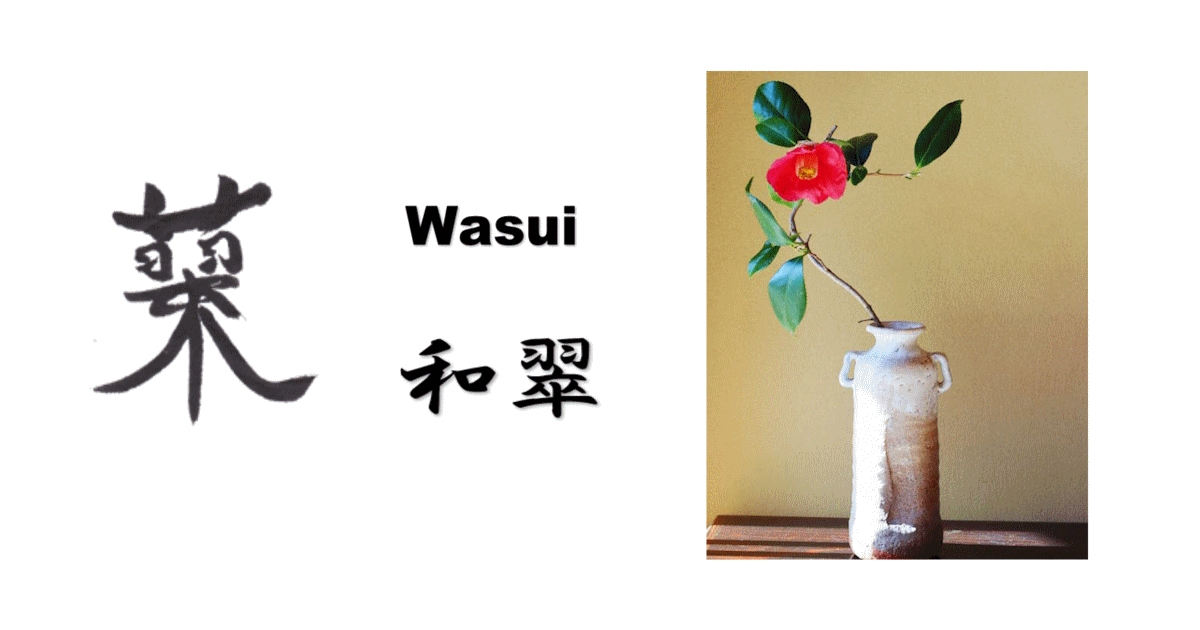和翠(わすい)とは What is Wasui?
野山の草花が清楚に織り成す自然な姿、そよ風にゆらぎ四季折々に移ろう彩り、そんな自然に”詫び寂び”の美意識を感じ続けていればやがて”大自然の気の流れ“が感じられるようになります。
この流れは激流の様に激しく捉えどころがなく翻弄されます。
でも”和“の力を信じ、無為の境地で”大自然の気の流れ“に身を任せれば”創造の気“と共鳴できるようになります。これこそ和翠の原動力です。
Imagine the serene beauty of wildflowers in a field, swaying gently in the breeze as the seasons change. By cultivating an appreciation for wabi-sabi, the Japanese aesthetic of finding beauty in imperfection and impermanence, one can begin to perceive the 気”ki” (natural energy) that flows through all things in nature.
This 気”ki” is as dynamic and unpredictable as a raging current. However, by embracing the concept of 和”wa” (harmony) and surrendering to the 気”ki” in a state of non-action, one can resonate with the creative spirit of nature. This is the essence of Wasui.
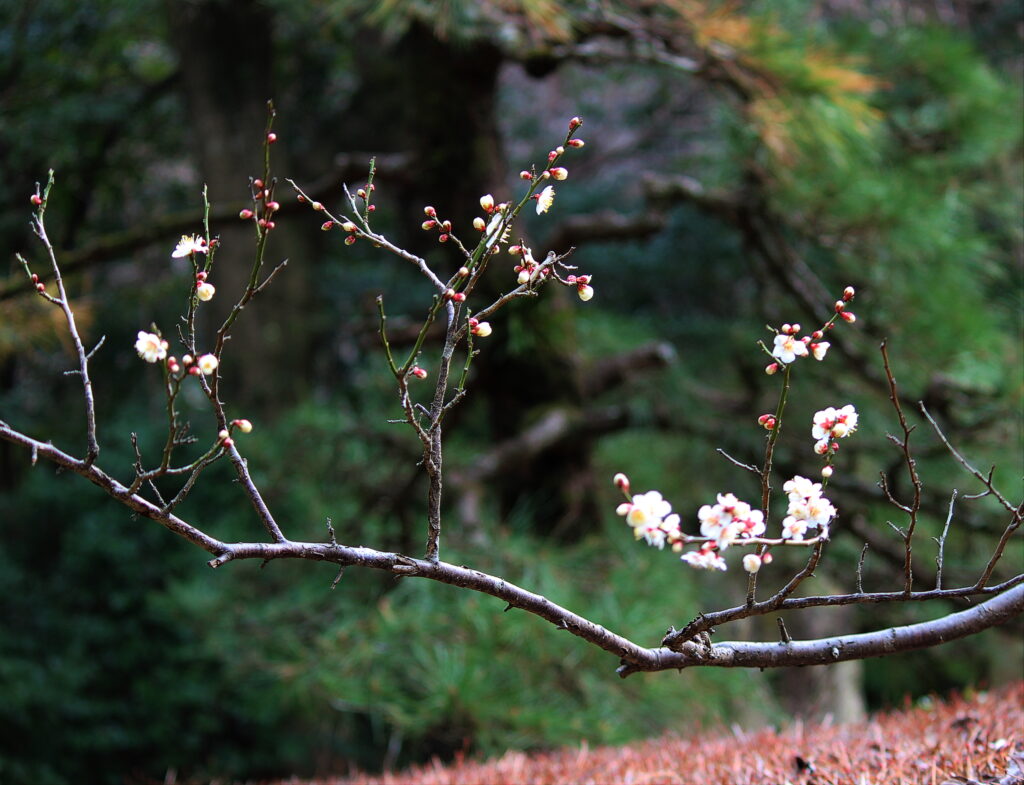
信楽の土と松灰だけで作った作品は野趣で素朴ですが馴染み易く人の気持ちを和ませます。”大自然の創造の気”と共鳴して作った作品は凛とした存在感が感じられ、使えば使う程に心が満たされます。この効果を私は”マインドフルネス“と称しています。和翠の作品は家の奥で大事に飾ったり倉庫にしまい込むのではなく、日々の営み、嗜みに愛用してこそマインドフルネス効果を実感できます。
Created solely from Shigaraki clay and pine ash, Wasui ceramics are rustic and simple yet inviting. Resonating with the creative spirit of nature, these pieces exude a dignified presence and bring a sense of peace and tranquility to the user. I call this effect “mindfulness.” To truly experience the mindfulness benefits of Wasui ceramics, they should be used in everyday life, rather than simply being displayed or stored.
詫び寂び wabi-sabi
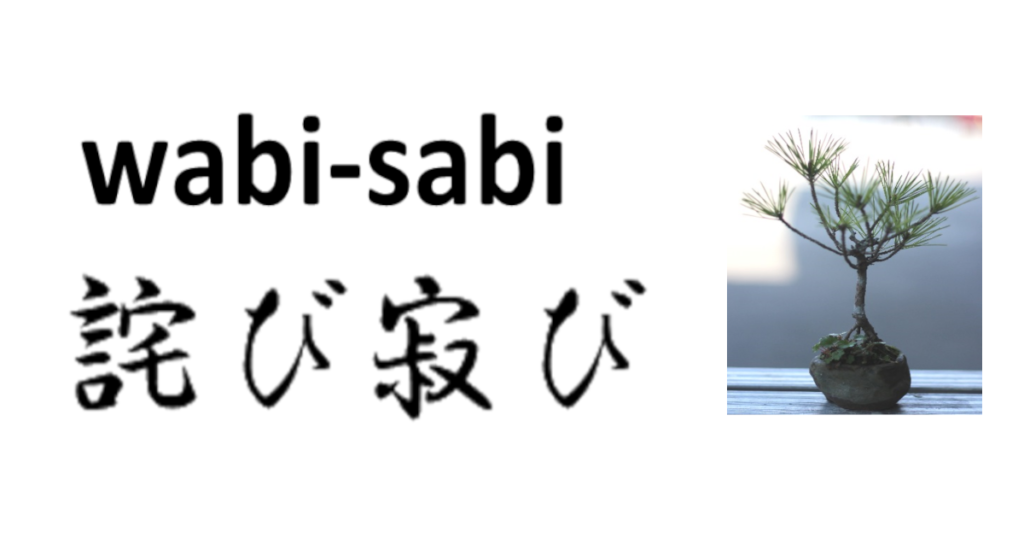
日本は水と自然に恵まれ、四季折々季節の変化に富んだ島国です。古来より人々は”里山”に象徴される自然と共存しながら暮らしてきました。そんな生活環境で自然の情景、四季の移ろいによって育まれた美意識が”詫び寂び“です。
- 詫びとは、身近な小さなものにも趣を感じる事。
- 寂びとは、季節の移ろい情景の変化に風情を感じる事。
そんな禅にも通じる感性です。それは暮らしだけではなく活花、茶の湯、日本画、剣道、和歌や俳句、そして陶芸などの”日本的表現”の中に取り入れられ、受け継がれてきました。
Japan, a small island nation, is blessed with abundant water and nature, and experiences distinct changes throughout the four seasons. Since ancient times, people have lived in harmony with nature, as symbolized by 里山”satoyama” (rural villages near mountains), living simple lives based on mutual respect and support. This lifestyle has fostered a unique aesthetic sensibility known as wabi-sabi, rooted in Zen Buddhism.
- Wabi refers to finding beauty in the imperfect and incomplete.
- Sabi refers to feel the charm of the changing scenery as the seasons change.
This aesthetic sensibility has been incorporated into
various aspects of Japanese culture, including 活花”ikebana” (flower arrangement), tea ceremony, Japanese painting, 剣道”kendo” (Samurai sword training), 和歌”waka” (Japanese poetry), 俳句”haiku”(Haiku poem), and of course, ceramics.
By cultivating an appreciation for the beauty of nature and the changing seasons through the lens of wabi-sabi, one can begin to perceive the 気”ki” (natural energy) that flows through world
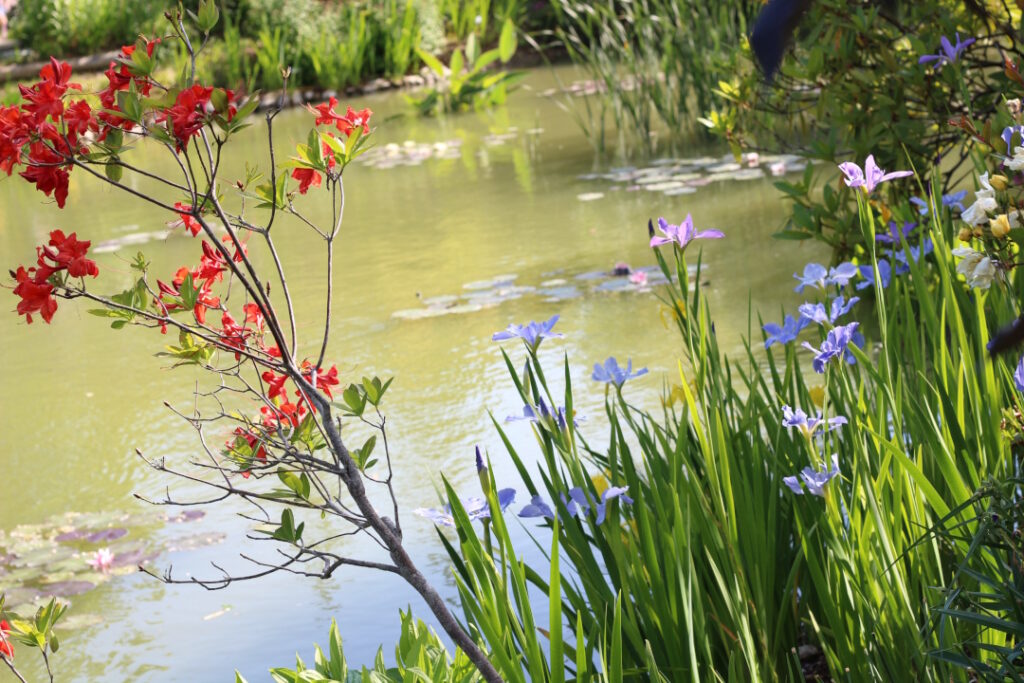
大自然の気の流れ
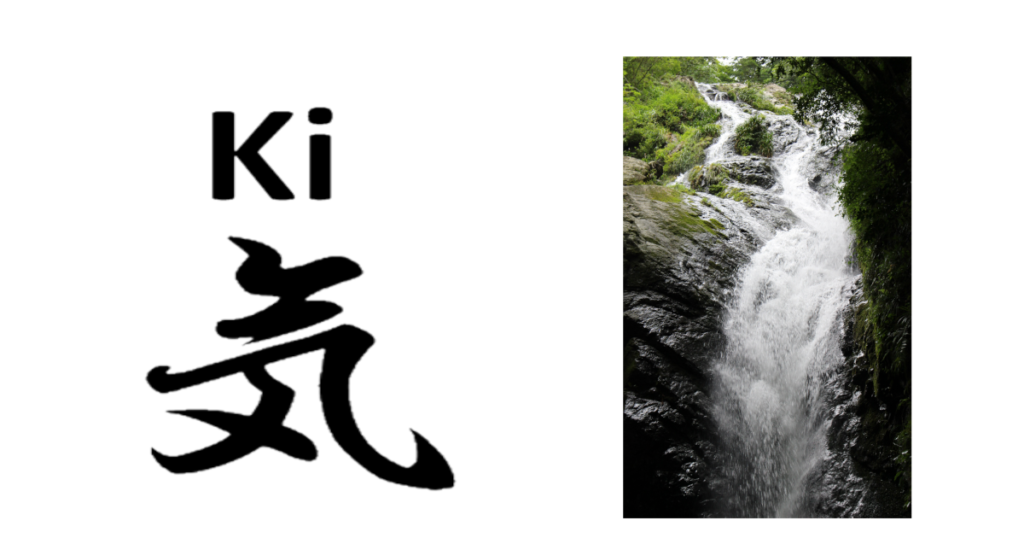
ここで私の勝手な思い込みを語る事をお許し願います。私は地球の大自然には破壊と創造の気が満ち溢れ、循環していると思えます。
- 破壊とは地震や火山、嵐や洪水などの天変地異、
- 創造とは山河の造山作用や 森林野原に広がる生態系など
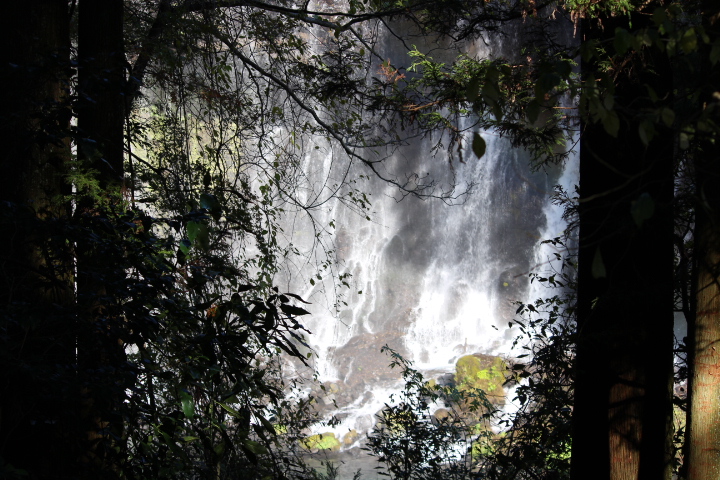
そんな循環の中で稀ではありますが大自然は奇跡としか思えない造形美を創造します。
Please allow me to share a personal belief. I believe that Earth’s nature is filled with the energy of both destruction and creation, and that these forces are in constant circulation.
Destruction manifests in natural disasters such as earthquakes, volcanic eruptions, and floods, while creation is evident in the formation of mountains and rivers, and the ecosystems of forests and fields.
Within this cycle, nature occasionally creates forms of beauty that can only be described as miraculous.
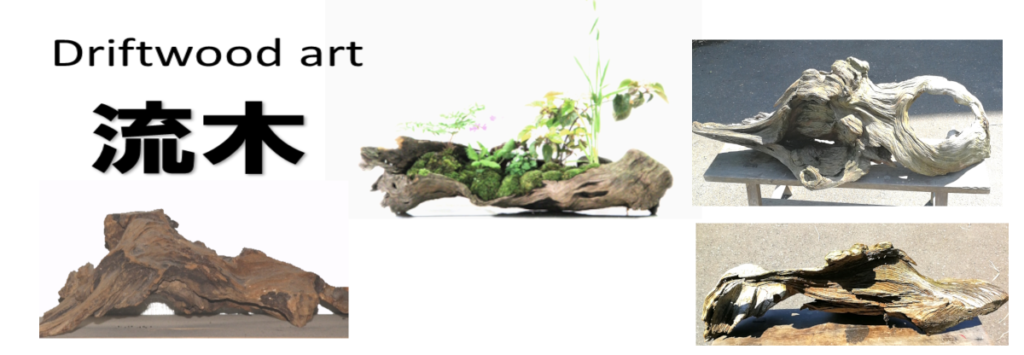
流木の奇跡の造形美にはダイナミックな”大自然の気”が感じられます。
土も又、奇跡の造形美を見せる事があります。
We can feel the dynamic 気”ki” (natural energy) of nature in the miraculous shapes of driftwood. And soil too, can exhibit a miraculous beauty in its forms.
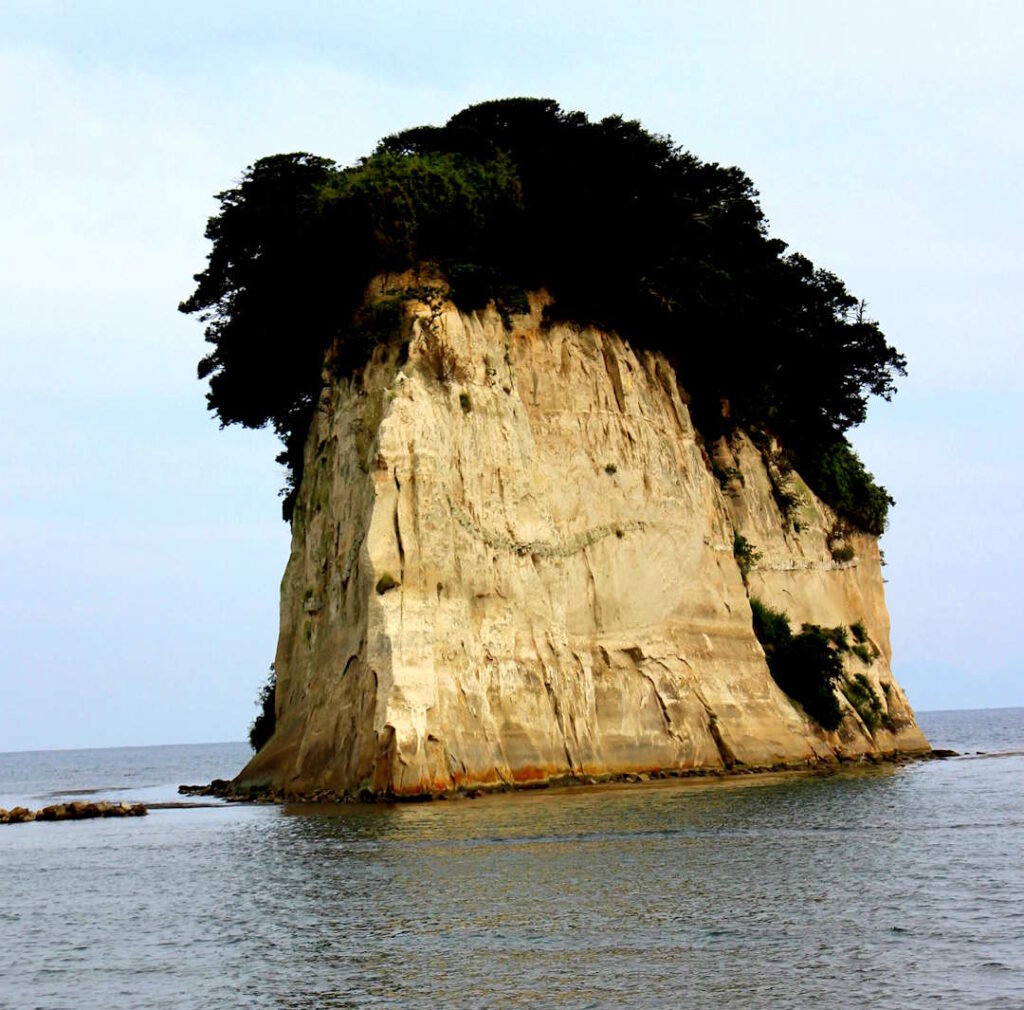
土壁や陶器の器など土もまた質感が人に優しく自然を感じさせます。
土は鉄やプラスチックやコンクリートに比べ、機能や耐久性、コストパフォーマンスに劣るかも知れません。それでも土壁や陶器などが日本人に愛用されている訳は、土の質感が人に優しく”大自然の気”を感じさせるからです。
Whether it’s a mud wall or a ceramic vessel, soil has a texture that feels gentle and natural to the touch. Compared to iron, plastic, or concrete, soil may be inferior in terms of function, durability, and cost-effectiveness. Yet, earthen walls and ceramics continue to be beloved by the Japanese people because of the gentle texture of the soil that allows us to feel the ki of nature.
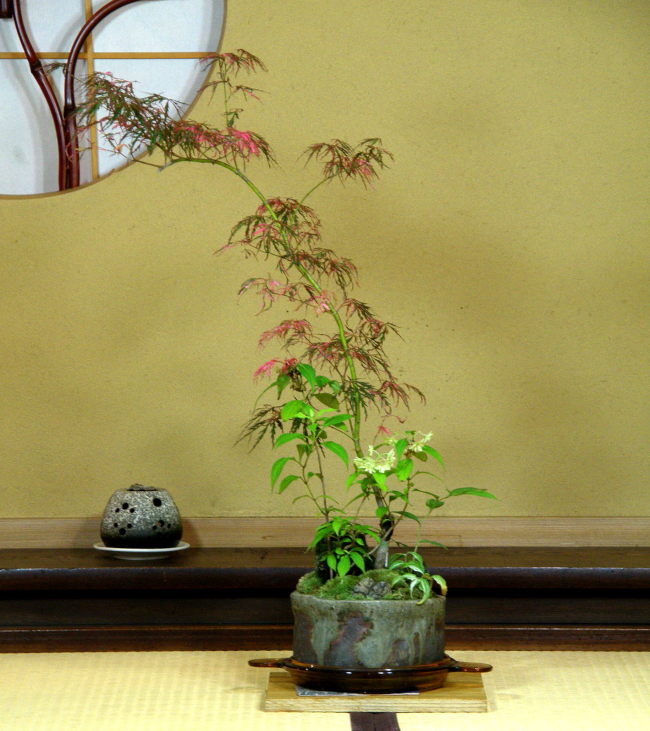
但し、実際に陶芸の創作で”大自然の気”と共鳴しようとすると激流の様に激しく、捉えどころがなく翻弄されます。
However, when attempting to resonate with the ki of nature during the creative process of pottery, it can feel as turbulent and unpredictable as a raging current.
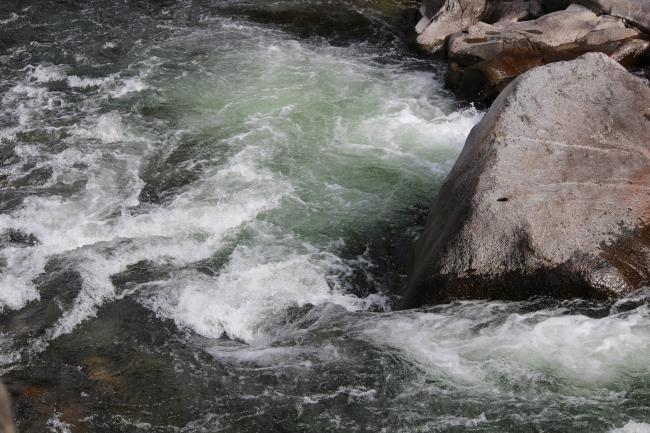
でも”和“の力を信じ、無為の境地で”大自然の気の流れ“に身を任せれば”創造の気“と同調できるようになります。
But by believing in the power of 和”wa” (harmony) and surrendering to the flow of nature’s 気”ki” in a state of non-action, one can synchronize with the creative spirit of nature.
和(わ やわらぎ なごみ)Wa
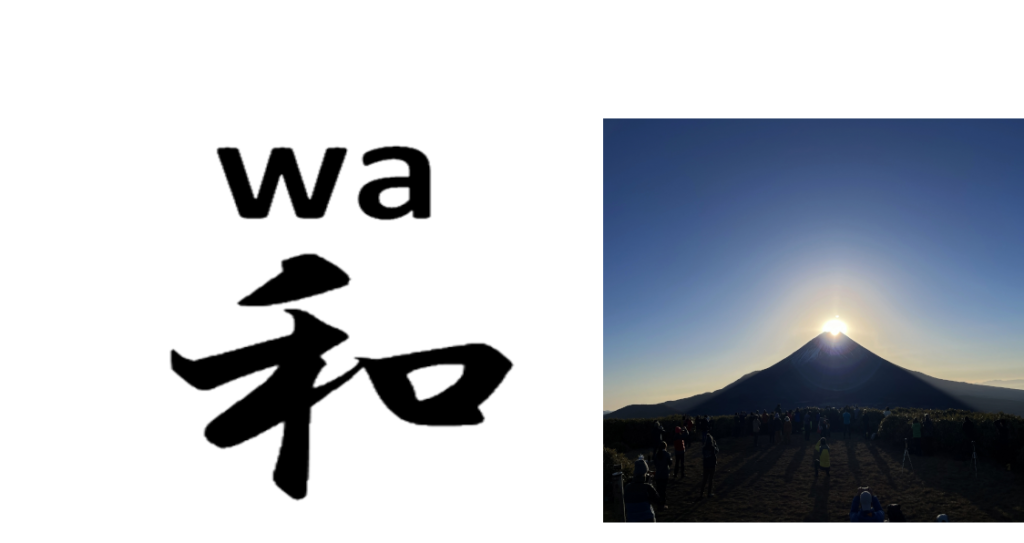
“和”によって”大自然創造の気”と同調すると言えば大袈裟に聞こえます。例えばこの松竹梅景観盆栽。初春の情景を表現していますが、実際の植栽は混迷とやり直しの連続でした。梅の蕾が開花したり松や笹やなど合わせやすい株が手に入らなかったり人の感性や知恵だけで植栽しようとするといつまでもまとまりません。鉢は荒ぶる岩盤の様な出来で植栽との合わせに戸惑いました。展示の日が迫ると焦りますが”和”の気持ちで自然に任せてこそ調和します。
It might sound exaggerated to say that we can synchronize with the creative spirit of nature through 和”wa” (harmony). Take this pine, bamboo, and plum bonsai for example. While it depicts an early spring scene, the actual planting process was a continuous struggle and trial and error. The plum buds wouldn’t bloom, and it was difficult to find compatible plants for the pine, bamboo, and other elements. If I had tried to create the arrangement solely based on human sensibility and knowledge, it would never have come together. The pot had a rough, rocky appearance that made it difficult to match with the planting. As the exhibition date approached, I felt a sense of urgency, but it was only when I surrendered to nature with a sense of 和”wa” that harmony was achieved.
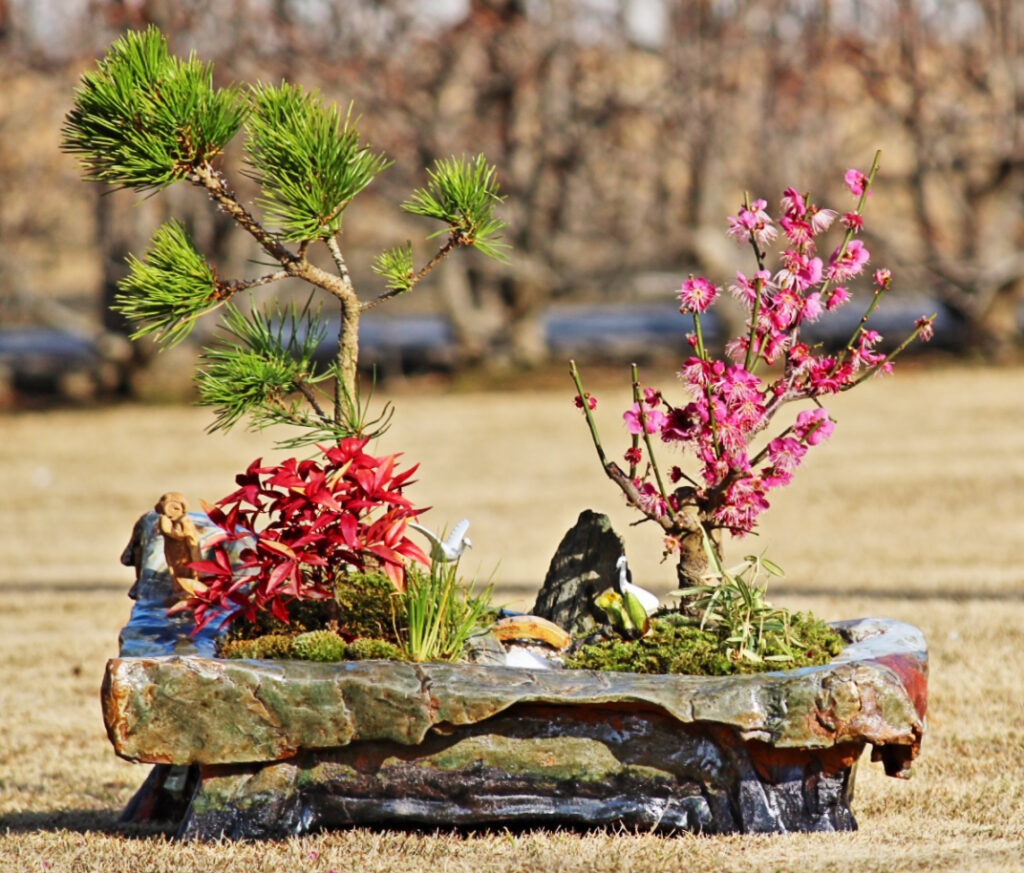
日本と言う国が生まれた時、”和“は一番大切な事とされました。人々は質素につつましく、互いを思いやり助け合い、礼儀と節度をわきまえて生きてきました。”和“はいろんな力をもたらします。”和“は日本的表現に携わる者にとっては大きく3つの意味をなします。
- “やわらぎ“、”なごみ“としての和。おだやかな気持ち、心が落ち着く事。
- “平和”としての和。多様な価値観を持つ人々と向き合い受け入れる事。
- “調和”としての和。激しさと穏やかさなど相反する事でもバランスを取る事。
From the dawn of Japanese civilization, 和”wa” has been the cornerstone of our culture. People lived simple lives, caring for and helping one another, and conducting themselves with respect and moderation. 和”wa” brings forth various powers, and for those involved in Japanese expression, it holds three significant meanings:
- Gentleness and tranquility: 和”wa” as a sense of calm and peace.
- Peace: 和”wa” as the acceptance of diverse values and perspectives.
- Harmony: 和”wa” as the balance of opposing forces, such as the wild and the gentle.
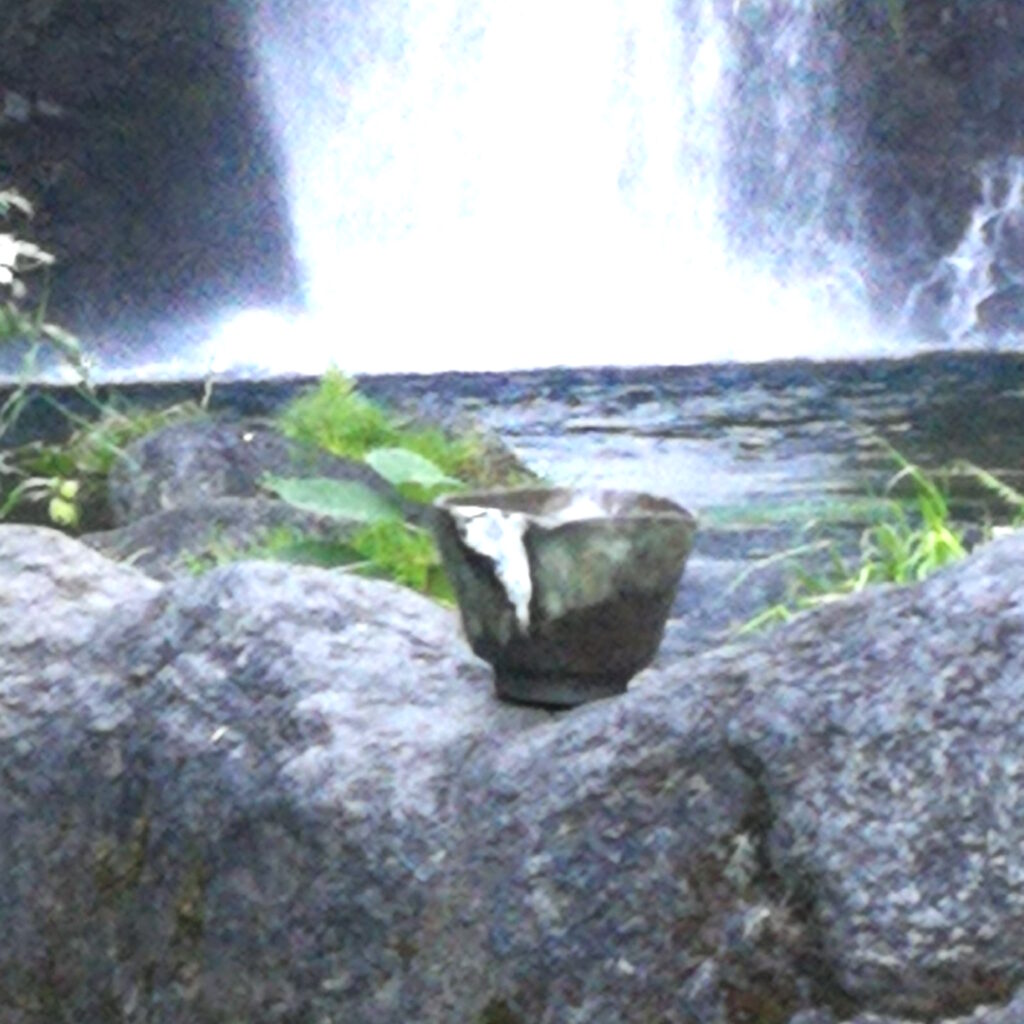
荒ぶる”大自然の気の流れ“を調和して器の形にした物は凛とした存在感が感じられ、使えば使う程に心が満たされます。この効果を私は”マインドフルネス“と称しています。
When the turbulent 気”ki” (energy) of nature is harmonized into the form of a vessel, it exudes a dignified presence and brings a sense of peace and tranquility to the user. I call this effect “mindfulness.”
マインドフルネス mindfulness
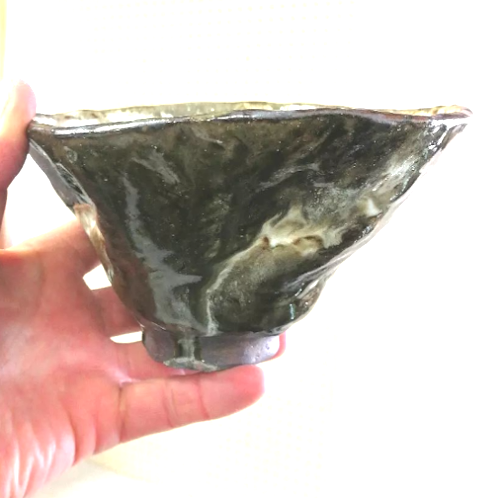
日本には陶芸の材料や工作器具が豊富にあります。でも私はあえて信楽の土と松の灰だけで作陶します。
- 信楽土の優れた耐火性と頼もしい腰の強さ、それでいて優しく暖かな土質。
- 松灰が降りかかった還元焼成で得られる自然な青緑色の表情。
和翠の器は野趣で素朴ですが、手で持ってみると自然と馴染み易く人の気持ちを和ませます。それでいて”大自然の気”を感じさせる凛とした存在感が感じられ、使えば使う程に心が満たされます。この効果を私は”マインドフルネス“と称しています。
現代社会は過度な都市化、IT化や物流の発展によってとても便利です。でも人々は自然との関わりが薄くなっています。理不尽の横行によるストレスや怒り、心の乱れが多い社会ではありますが”マインドフルネス”に触れて本来の自分を取り戻しましょう。
Japan boasts an abundance of materials and tools for pottery. Yet, I choose to create my works using only Shigaraki clay and pine ash.
Shigaraki clay, with its exceptional resilience and robust structure, provides a foundation of strength and durability.combined with a gentle and warm texture.
The natural blue-green hue achieved through reduction firing with pine ash creates a unique expression.
Wasui ceramics are rustic and simple, yet they feel natural in the hand and have a calming effect. At the same time, they exude a dignified presence that allows one to feel the 気”ki” (energy) of nature. With repeated use, they bring a sense of peace and fulfillment. I call this effect “mindfulness.”
In today’s society, excessive urbanization, IT development, and advancements in logistics have made our lives incredibly convenient. However, people have become increasingly disconnected from nature. In a society rife with injustice, stress, anger, and unrest, it is essential to reconnect with our true selves through mindfulness.
使うほどに Use Wasui Ceramics in Your Daily Life
和翠の作品は家の奥で大事に飾ったり倉庫にしまい込むのではなく、日々の営みや嗜みに愛用してこそマインドフルネスを実感できます。
Wasui ceramics are not meant to be treasured and hidden away in the back of a cupboard. To truly experience the mindfulness benefits, they should be used in your daily life.
- 渋くて旨いお茶を飲んだり、
Enjoy a cup of rich, flavorful tea.
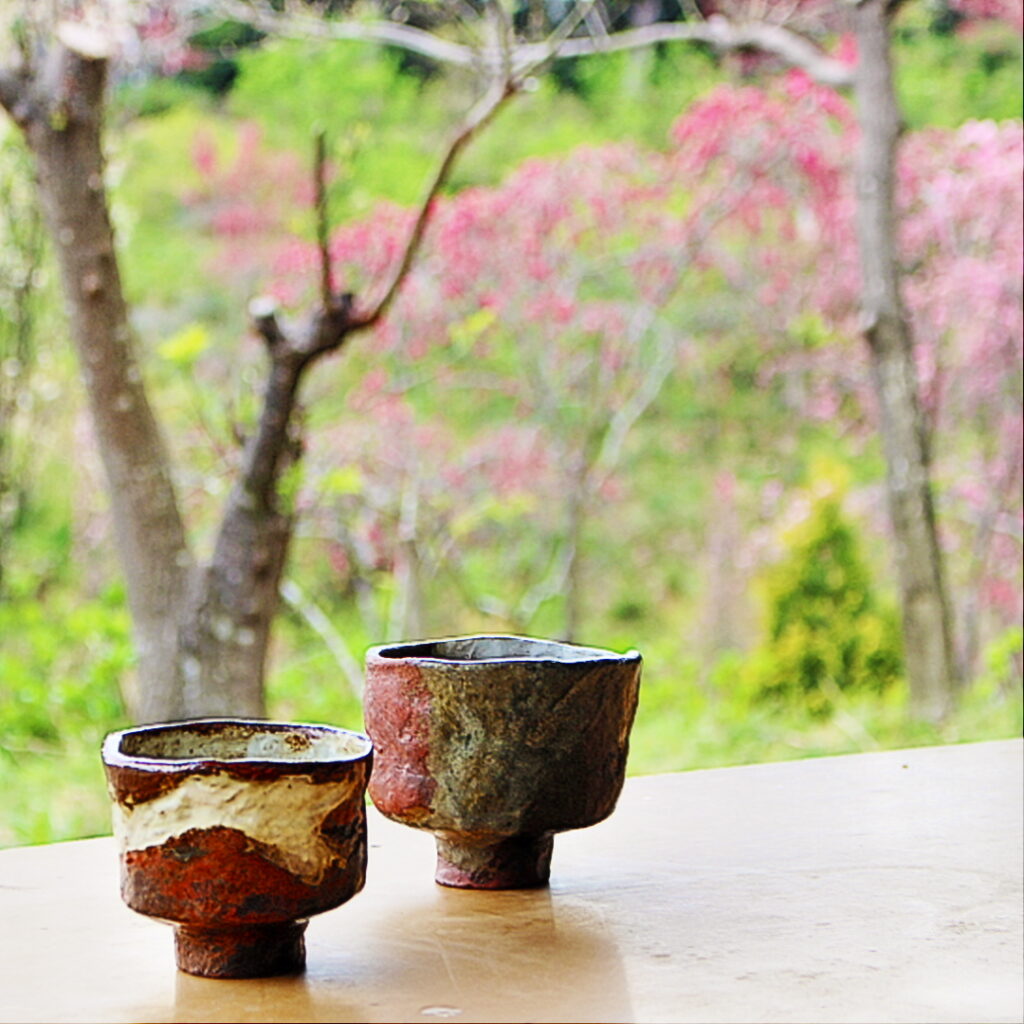
- 小さな器に自然の草花を植えてみたり
Plant a wildflower in a small vessel.
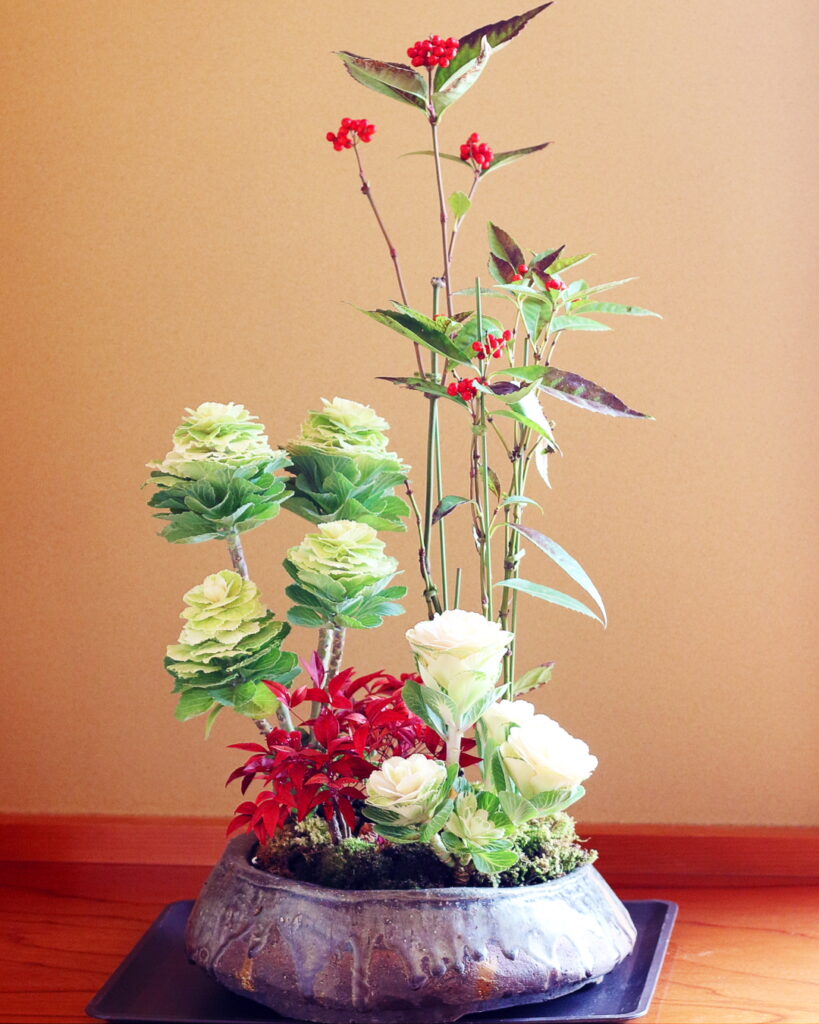
- とっておきのお酒を気に入った湯呑みで飲んでみたり
Savor your favorite drink from a special teacup.
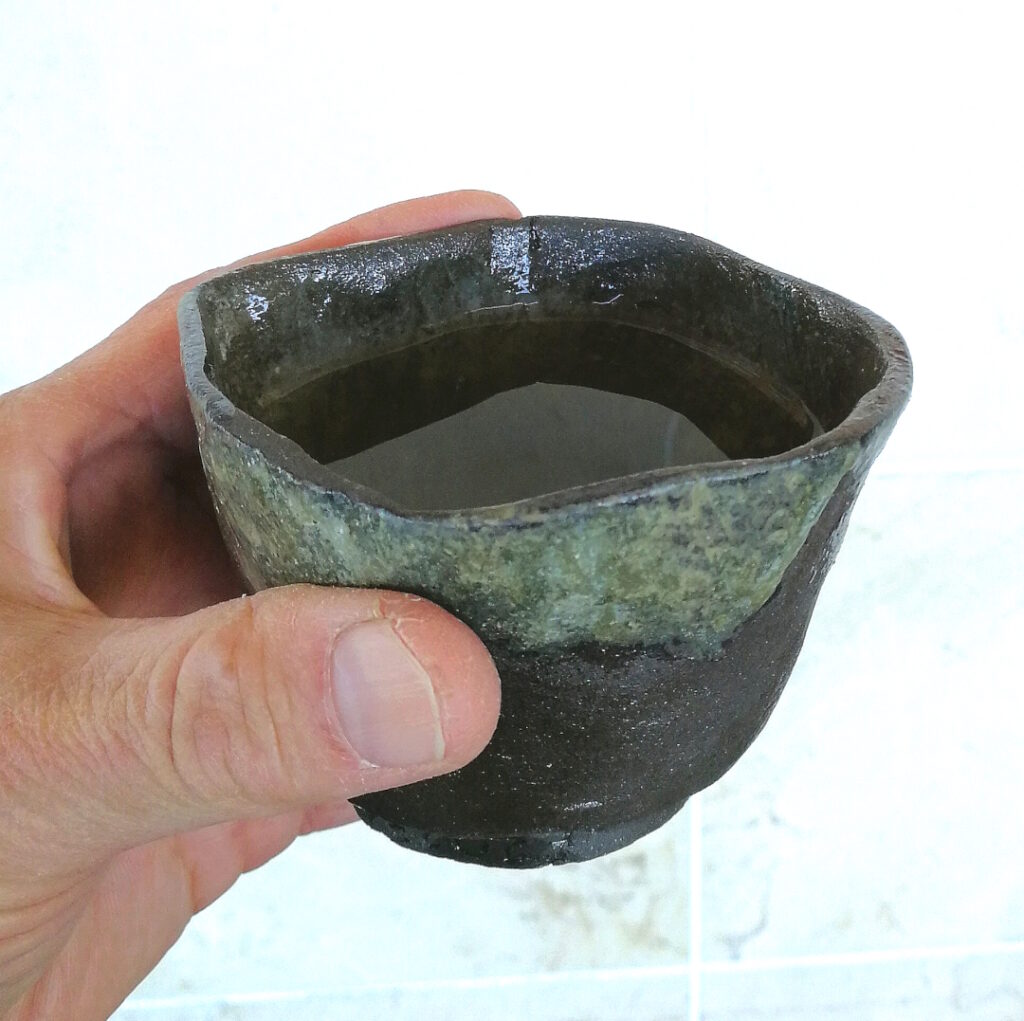
- 美味しいご飯や麺類を馴染みの茶碗で食べてみたり
Relish a delicious meal or noodles from a familiar tea bowl.

和翠の作品は人間の私が作ったものではありますが、私の能力や才能で作ったものではなく”荒ぶる大自然の気”を調和して形にしたものです。”芸術だ”とか”宝だ”とか評価される事には関心がありません。どこかの誰かに日々の営み、嗜みに愛用してもらえることが無上の喜びです。
While Wasui ceramics are created by human hands, they are not products of my personal skill or talent. Rather, they are the result of harmonizing the turbulent ki (energy) of nature. For me, the greatest reward is knowing that my works bring joy and comfort to others My greatest joy comes from knowing that someone, somewhere, is using my ceramics in their daily lives.
